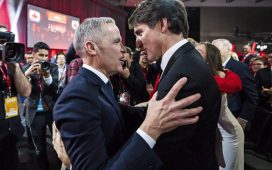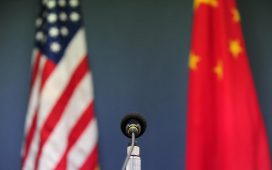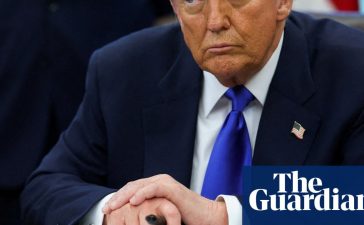
What is your assessment of the 50 bps rate cut by the Fed last week and its impact on the Indian market ?
We had expected 50 basis points of rate cut after the July non-farm payroll came in. I think first we have to understand why the rate cut took place, right? If you looked at the US in 2023, you had a situation where the US was growing much more strongly than people had expected. And despite the strong growth rate, strong disinflation was taking place.
Typically, you don’t see that happen. It was happening because most of the inflation that took place over 2021 and 2022 globally and in the US were driven by two factors. One was a massive, synchronized surge in global demand when everybody opened at the same time. The other was continued supply-chain disruption especially as the largest manufacturing hub in the world, China, remained closed. This was worsened by the Ukraine War related spike in energy prices. After China opened up in 2022 November and energy prices normalize, a large disinflation followed since mid-2023. In the US, labor markets, after the frenzy in 2021 and 2022 also began to normalize, easing wage pressures.
So, there was a large supply side response globally since the second half of last year. This has slowed considerably today but it is not reversing.
By the time we get to the end of 2023, the market was pricing in about 7-8 rate cuts in the US. That was because the market was extrapolating that the pace of disinflation would continue. Things changed early this year when both the US labor market and inflation reversed. However, since June the labor market has begin to cool and disinflation has resumed, albeit at a slower pace.
Three months back, risks to the labor market and inflation were on the upside, and this meant that the Fed needed to keep up its restrictive stance.But over the last few months, those risks have moved to being two-sided. If risk has turned two-sided, then it means that the restrictive stance needs to move towards neutral. Consequently, this is a recalibration of Fed stance to the change in risks. However, if monetary policy is being eased, then instead of ending the expansion, the expansion will likely get extended. So now, the question is, how does India’s asset prices respond to this? Apart from occasional volatility, global financial conditions have been benign. If global financial conditions ease from here or the RBI cuts to do the same domestically, then Indian markets will react.The rupee has strengthened a little bit in the last few days after the rate cut.
Yes, that’s because the interest rate differential with the US has narrowed. If the interest rate differential narrows in favor of India, then the currency will strengthen. This is broadly the case with other emerging markets too. .
Will the RBI let the rupee strengthen given the kind of trade deficits that we are seeing, and exports are slowing
Indian exports have never responded strongly to the rupee. It is strongly dominated by global demand. So much will depend on global growth.
So, now this week, the BOP numbers are expected. What is your reading?
You’re seeing the equity market flows back in. There are debt flows from the inclusion in the bond index and oil prices are likely to be soft. Taken together, my guess is that the balance of payments remains okay.
Could it derail from last year’s levels?
The biggest flow is FDI. FDI has slumped and there aren’t many signs of recovery. You really require FDI to go to the 70-75 billion dollars run rate for BOP flows to strengthen materially.
As you said, inflation around the world is coming down. What about India? Because two external MPC members have voted for a rate cut saying that we may be sacrificing growth and we have the potential to grow by a higher potential. So, what’s your opinion on that?
So, there are two different questions.
The answer to your first question is that India’s potential growth has never responded to interest rates as in other countries.
But the RBI should cut. Regardless of what the recorded growth shows, the proof of the pudding in the inflation. Core inflation today is at its lowest since the inception of the index in 2012. And over the last nine months, core inflation has been falling.
In any economy, when you have sustained decline in core inflation, it usually means that the economy not only has excess capacity, but that the excess capacity is widening and not narrowing. So, if you have a country in which the excess capacity is widening, then your interest rates are far too restrictive and needs to be recalibrated lower.
What are your estimates for this year’s GDP?
If you are talking about recorded growth, then following the methodology of CSO who compiles nominal GDP and then deflates using WPI, much depends on what WPI does. 70% of India’s nominal GDP including services and a large portion of manufacturing is deflated not by the producer price index because India does not have one but by WPI. WPI is dominated by global crude oil prices. So, if crude continues to decline, WPI will disinflate further, and arithmetically recorded real growth will go up.
RBI seems to be having surplus liquidity for quite some time except the last few days because of advance tax outflows. But at the same time its stance is of withdrawal of accommodation. So, does it mean that the thing is that it is managing its monetary policy objective through liquidity management?
RBI may be technically an inflation targeting central bank, but in practice it juggles several objectives: FX, growth, inflation, bond yields, and financial stability. So, in balancing all these objectives, it uses multiple instruments. And it has been very successful in doing so. In contrast, take the Brazil central bank. It has a single objective, namely inflation. It uses a single instrument, the interest rate. So, if inflation goes up, you know exactly what is going to happen to interest rates. RBI and other Asian central banks don’t do that. They are multiple objectives, multiple instruments central banks. That way they keep markets guessing and successfully avoid getting targeted by the market.
So, it is hard to identify what RBI is targeting by looking at one instrument. However, it has been signaling a less restrictive by letting interbank rates decline from the spike in mid-23 and more recently this April.
How do you see geopolitics playing?
If geopolitics flares up, that is going to trump what is happening to interest rates.
But we are focused on the US elections. And to us, US elections pose the risk of a material change in US economic policy depending on the outcome of the election. This can have a dramatic impact on global economics, particularly on the emerging markets, including India. If President Trump gets reelected, as he has been saying during his campaign, the US will raise tariffs on China. In 2018 and 2019, when tariffs were increased in China, the outcome of that trade war was not what one would have imagined an increase in tariffs would have had.
Typically, when tariffs are imposed the exchange rate of the country on whom it is imposed depreciates. Exporters in that country therefore reduce their local currency prices, such that the dollar price more or less remains the same after tariffs. Consequently, there is no impact on export volume. That didn’t happen in 2018-19. China did not reduce its dollar prices of goods exported to the US. But it did let the currency depreciate significantly to offset the tariffs. With higher post-tariff prices, exports to the US declined. Countries like Mexico, Vietnam, and India stepped in to fill the gap. But China’s share in global trade increased.
They looked elsewhere?
That’s correct. Now let’s say if 2018-19 plays out. If indeed the US imposes 60% tariffs on China, then the potential depreciation of USD/CNY is around 30%. Let’s say China doesn’t allow that to happen, because obviously that’s going to create financial instability problems, but let’s say China lets CNY depreciate half way. This means that the INR appreciates 15% against CNY.
India’s trade deficit with China has been widening sharply, with CNY 15% depreciated , it will widen even further. What does RBI do then? Does it let its exchange rate depreciate against the dollar to offset the appreciation against INR. Perhaps, but it will be very hard to offset the appreciation against CNY fully.
Last year, you were talking about CNY emerging as an important currency for trade invoicing, so how is that progressing?
So now it’s about 40-45% of all trade, China does is settled in RMB. That does not change what happens to USD/CNY if tariffs rise.
Coming back to India, what will be the theme of growth this year?
Look, I know there is this big thing about the consumption puzzle in India. There is no consumption puzzle. Last year, nominal GDP recorded by CSO was 9.5%.Therefore, nominal income grew by 9.5%. CPI was 5.5%. Therefore, real income grew by 4%. Consumption grew by 4%. Where is the puzzle? The real puzzle is why real income grew only by 4%. Real GDP is measured using WPI and not by PPI. It is a problem with CSO’s methodology. The question that needs to be asked is why in 2024, when most countries use PPI to deflate nominal growth, why doesn’t India even have a producer price index?
What is your take on the credit growth and credit deposit ratio that everybody is talking about?
Loan to deposit ratio has gone up over the last, I would say, 8-9 months. But it is still significantly below what we used to have back in 2013, before the pandemic. It had been down prior to that. Part of the reason was deleveraging related to the NPL restructuring. I don’t think it has risen to a level where it poses a macroeconomic risk, but the pace is worrisome. And the RBI is rightly concerned











